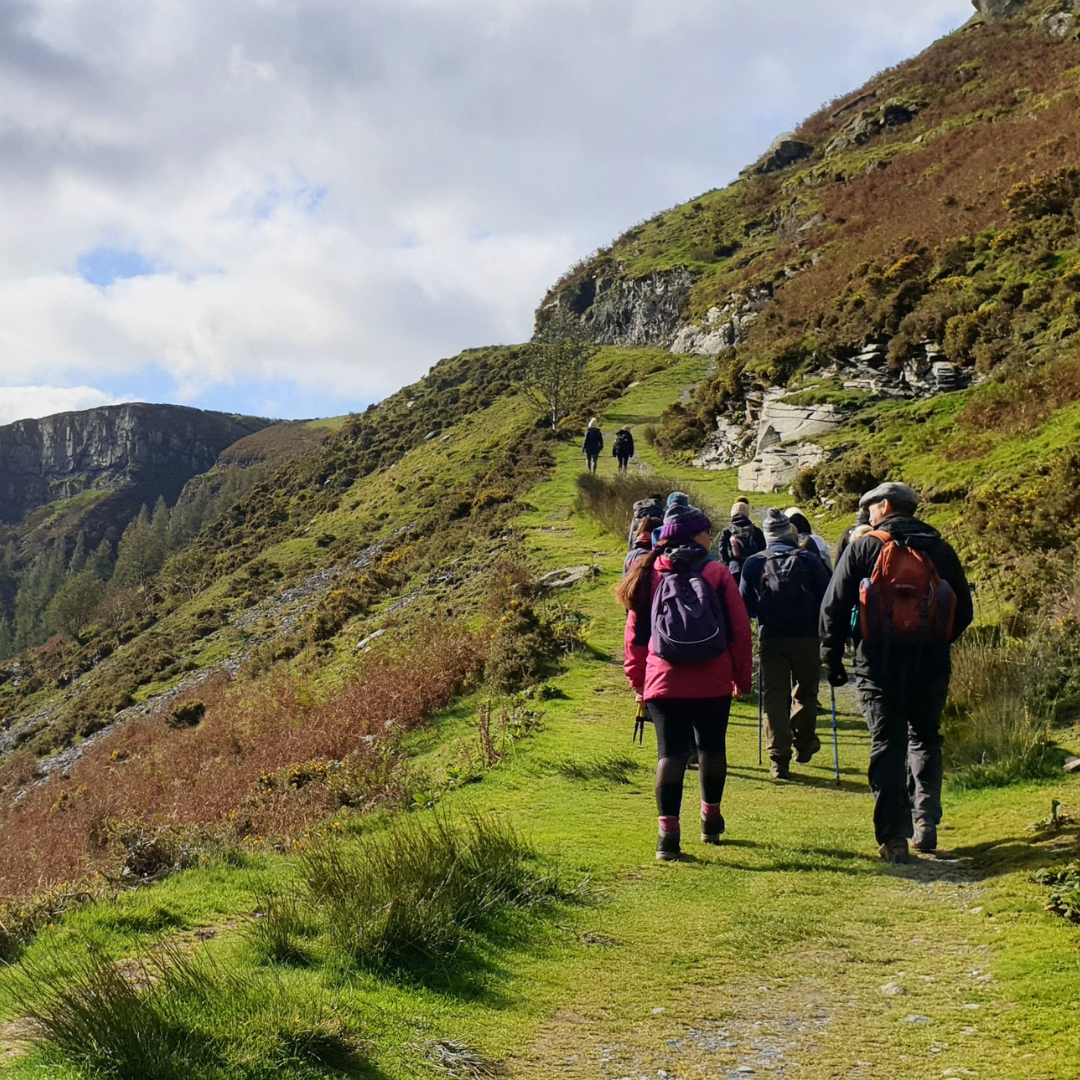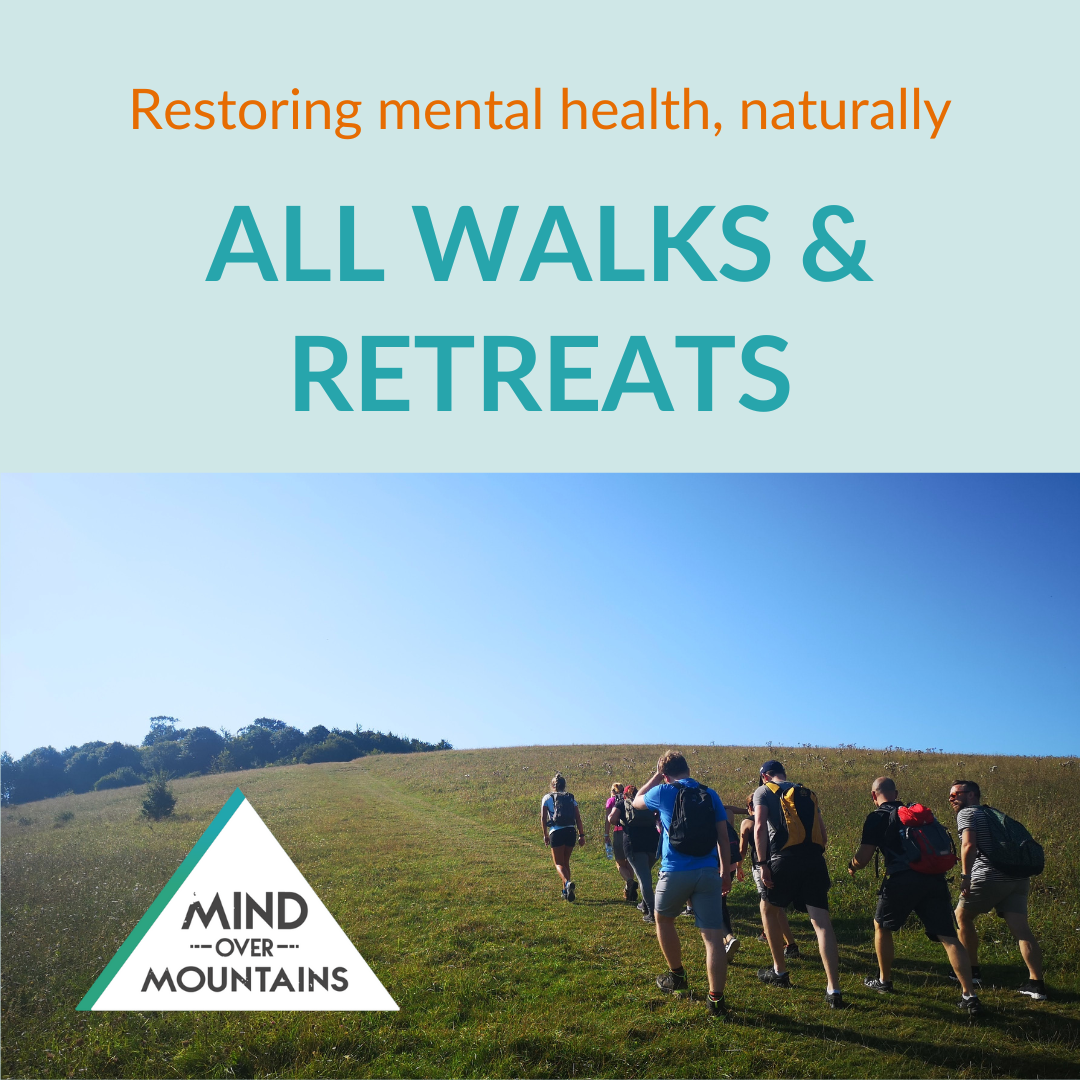
Mindfulness helps to reduce stress, improve mental clarity and enhance emotional wellbeing - yet its something that many of us struggle to make an effort to include in the day to day. So incorporating simple mindful exercises into your daily walk can make a huge difference.
You’ve probably heard us mention mindfulness quite a lot. And that’s because we believe wholeheartedly in its power to help us feel fully present and engaged in the moment. We practice mindfulness during our wellbeing walks and retreats, to help participants feel connected and grounded - and it also helps to reduce stress, improve mental clarity and enhance emotional wellbeing too.
Yet mindfulness is something that many of us struggle to make an effort to include in the day to day. Incorporating mindfulness into your daily walk can make a huge difference - so here are five mindful exercises that you can use during your next walk in nature.
Forest Bathing

Shinrin-Yoku, or forest bathing, originated in Japan in the 1980s. Researchers found that levels of stress and burnout were so high, and people living in urban areas were crying out for a way to slow down and engage with the natural world.
Translated literally as ‘taking in the forest atmosphere’, forest bathing was born of a need to reconnect, and its actually a really simple concept. All you need to do is immerse yourself in a forest environment. Be around the trees. Use your senses to breath in the aromas, touch the bark of a tree, and watch as the sunlight peeps through the leaves… sounds good, right?
Forest bathing has been shown to lower blood pressure, reduce cortisol levels and boost immune function, promoting a sense of calm and rejuvenation. So, our first tip - go forest bathing! Here’s how:
Plan your next walk so that you can spend some time in a forest or wooded area, without a specific goal or activity. Allow enough time to simply be still for at least 15 minutes. And engage all your senses - reach out and touch the trees, or take your shoes off so you can feel the ground beneath your feet; listen to the rustling leaves and breathe in the scents all around you; watch the play of light and shadows. Congratulations - you’ve just been forest bathing!
Mindful breathing
Mindful breathing can be done anywhere, but there’s something extra special about doing it out in nature. And yes, you can do this while you walk too.
Mindful breathing is all about focusing your attention in on the breath, observing each inhale and exhale without trying to change or control it. It’s a simple yet powerful technique that helps to anchor the mind to the present moment, reducing distractions and calming the mind - and the benefits can be profound.
Mindful breathing can significantly reduce stress and anxiety, lower blood pressure and improve emotional regulation. It can bring a sense of peace and calm, especially when done in combination with a walk outdoors in nature.
On your next walk, take a moment to stop in a safe space, and close your eyes so that you can focus on slowing the breathing. When you inhale, imagine drawing in the freshness of the natural air around you, as your lungs fill and the belly expands. Then when you exhale, imagine you’re releasing any tension you may have been holding. Keep doing this as you walk, and allow the breath to fall into step with your feet.

Ground yourself in nature
Grounding in nature is also known as ‘earthing’ and is a really simple yet effective way to calm the mind and re-connect with the natural world. Depending on weather and location, this is another mindful exercise you can try on your next walk.
So how do we carry out grounding, or earthing? Take off your shoes! Grounding means connecting physically with the natural environment; walking barefoot on grass, sand or soil is one of the easiest and most accessible ways to do it - or dip your feet into water if its accessible and safe to do so.
The idea is that direct contact with the earth’s surface can deliver beneficial electrons to the body, but it can also help us to feel connected to nature too. Feeling the ground beneath your feet without the constraints of shoes can be really beneficial, and deepen your connection to nature overall - resulting in lower stress and lower anxiety.
On your next walk outside, find a patch of grass or some space on sand or soil, and take off your shoes and socks. It might feel strange at first, but if you allow your focus to connect with the feeling of your feet touching the ground you’ll start to relax. Notice the texture and temperature beneath your feet, and take some time to explore using your senses in this way.
Journalling in nature

If you haven’t kept a journal since you were much younger, you’re not alone. But there’s a reason why your teenage self found it so therapeutic - writing down our thoughts and feelings can be really helpful when it comes to figuring our complex emotions, and solutions often come to us when we put pen to paper in times of distress or unease.
Journaling is a great way to gain clarity and to reflect on personal growth, and taking your notebook out into a beautiful natural setting can really help. All you need is a little time and space to reflect and write… and a pen, of course!
On your next walk, take a moment to really notice your surroundings, and spend some time writing down what you see, hear, smell and feel. Record your thoughts, feelings, reflections and any other insights that come to mind. Just notice, and write. No judgement. This exercise can help enhance mindfulness overall, and it also fosters creativity while at the same time giving you a lasting record of your experiences in nature.
Mindful listening
One of the easiest exercises you can do as you walk - mindful listening. You might find it easier at first to find a quiet spot where you can stop to do this, but it can be done while you move too.
Focus in on all the sounds you can hear immediately around you. If you’ve stopped somewhere safe, you can close your eyes here. Start by listening out for the sounds of your own body - the sounds of your breath, or maybe your tummy gurgling. Then extend outwards and listen for the sounds of leaves as they rustle in the breeze, or the ground beneath you as your feet press into the earth. Then allow your focus to extend even further. - can you hear birds, or any other sounds further off in the distance? Identify each sound without labelling or judging it. Just notice.
Mindful listening is great for enhancing your awareness of the natural world around you, and can promote a deep sense of calm and connection.









